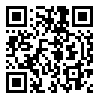Volume 5, Issue 2 (Summer 2018)
jhbmi 2018, 5(2): 274-285 |
Back to browse issues page
Download citation:
BibTeX | RIS | EndNote | Medlars | ProCite | Reference Manager | RefWorks
Send citation to:



BibTeX | RIS | EndNote | Medlars | ProCite | Reference Manager | RefWorks
Send citation to:
Hassanzadeh M, Zabbah I, Layeghi K. Diagnosis of Coronary Heart Disease using Mixture of Experts Method. jhbmi 2018; 5 (2) :274-285
URL: http://jhbmi.ir/article-1-216-en.html
URL: http://jhbmi.ir/article-1-216-en.html
PhD Student in Computer, School of Electrical and Computer, Tehran North Branch, Islamic Azad University, Tehran, Iran
Abstract: (9161 Views)
Introduction: Coronary Artery Disease (CAD) is one of the most common heart diseases and the main cause of mortality in men and women. This study aimed to predict the disease status using Neural Network compound (mixture of experts).
Methods: The present study was a diagnostic study conducted on 200 patients referred to a heart specialty center in Torbat-e-Heydarieh. Patients' files contained their demographic information including13 risk factors. A model for predicting CAD based on multilayer perceptron neural network and mixture of experts was produced.
Results: First, we used a neural network of multilayer perceptron with Propagation algorithm by different architectures. The best architecture could predict closed coronary artery with the accuracy of 71.7%. Then, by increasing the number of neural networks and training process, results were combined. Mixture of experts by liner method (majority voting) and nonlinear method (gating network) was applied and the accuracy rates of 75.8 percent and 78.3 percent were respectively obtained.
Conclusion: Angiography is an invasive diagnostic procedure with risk factors such as stroke and heart attack. Therefore, non-invasive methods should be used for the diagnosis of CAD. In this study, with increasing the number of learners and their nonlinear mixture, the accuracy of diagnosis was increased.
Methods: The present study was a diagnostic study conducted on 200 patients referred to a heart specialty center in Torbat-e-Heydarieh. Patients' files contained their demographic information including13 risk factors. A model for predicting CAD based on multilayer perceptron neural network and mixture of experts was produced.
Results: First, we used a neural network of multilayer perceptron with Propagation algorithm by different architectures. The best architecture could predict closed coronary artery with the accuracy of 71.7%. Then, by increasing the number of neural networks and training process, results were combined. Mixture of experts by liner method (majority voting) and nonlinear method (gating network) was applied and the accuracy rates of 75.8 percent and 78.3 percent were respectively obtained.
Conclusion: Angiography is an invasive diagnostic procedure with risk factors such as stroke and heart attack. Therefore, non-invasive methods should be used for the diagnosis of CAD. In this study, with increasing the number of learners and their nonlinear mixture, the accuracy of diagnosis was increased.
Type of Study: Original Article |
Subject:
Artificial Intelligence in Healthcare
Received: 2017/08/13 | Accepted: 2017/11/26
Received: 2017/08/13 | Accepted: 2017/11/26
Send email to the article author
| Rights and permissions | |
 |
This work is licensed under a Creative Commons Attribution-NonCommercial 4.0 International License. |



